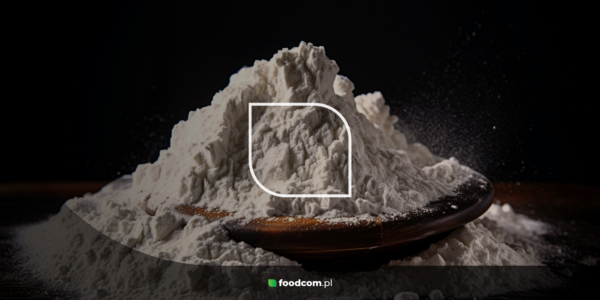- European dairy prices are rising due to limited production and high demand.
- Sweet Whey Products in Europe are experiencing significant price hikes due to supply shortages.
- Bird flu disrupts U.S. dairy production, and New Zealand drops its agricultural emissions pricing plan.
Hello Partners!
Welcome back to our Newsletter!
The European dairy market is experiencing dynamic changes, affecting the prices of skimmed milk powder, butter and whey. These changes are due to various factors, such as declining production and limited supply, leading to market turmoil. Meanwhile, in the United States, avian influenza is disrupting the dairy industry supply chain, and New Zealand is abandoning plans to tax agricultural emissions as it looks for new ways to reduce methane.
Let’s take a look at what else is happening in the dairy market!
Products of the Week
Skimmed Milk Powder
The European Skimmed Milk Powder (SMP) market has experienced a steady increase in prices. Currently, prices range from 2450 to 2550 EUR/MT for deliveries scheduled in July and August 2024. This price increase is attributed to the limited number of sellers and the stable position of producers and traders, which reduces the risk of price declines.
Cheese
In the past week, the prices of Gouda, Edam, Cheddar, Cagliata, and Mozzarella cheeses have generally remained stable, with slight increases in some cases. Gouda and Edam are in high demand in Europe, and limited production has contributed to price increases. Cheddar shows moderate stability with slight fluctuations, mainly in the USA, UK, and Canada. Cagliata, a key ingredient in the production of other cheeses, maintains stable prices, while Mozzarella, popular in Italian cuisine, enjoys consistent demand, especially in Europe and North America.
Fats
Butter prices in Europe have risen significantly in the last week, surpassing 6,000 EUR/MT and reaching as high as 6,700-6,850 EUR/MT. The main reason for this increase is a 6% drop in milk production in Ireland compared to 2023, coupled with an overall 4.6% year-on-year decrease in butter production across Europe. Despite the high prices, demand for butter remains strong. The elevated prices are leading to a market shift, making butter production more profitable than cheese and whey production.
Liquids
Cream prices in Europe have risen to 7800 EUR/MT. This increase is mainly due to rising butter prices and limited milk supply, particularly in Ireland, where production has dropped. Stable demand and cautious stock-building by producers are further driving prices up.
The European Skimmed Milk Concentrate (SMC) market has experienced a price drop to 1650-1700 EUR/MT FCA due to high supply driven by increasing demand for fresh dairy products like yogurt and ice cream. Despite this adjustment, prices are still supported by steady demand, keeping the market in a stabilization phase.
Milk prices in Europe have stabilized, showing slight increases. This trend is expected to continue, supported by the rising demand for dairy products.
Whey powders
Sweet Whey Powder (SWP) prices in Europe have increased to approximately 850-980 EUR/MT due to limited supply and rising demand, particularly in the food and beverage sector. Additionally, European SWP exports have dropped by 10% compared to 2021, further inflating domestic prices.
The European sweet whey concentrate (SWC) market has also seen significant price hikes. In Germany, SWC prices have surged from 300 EUR/MT to about 500 EUR/MT, pushing prices across Europe to 880-920 EUR/MT in Eastern Europe and 900-980 EUR/MT in Western Europe. The primary factors behind this rise are supply shortages caused by delays in the launch of a new production facility and a decrease in milk production.
What else?
North America
Bird flu has infected at least 80 dairy herds across ten U.S. states, causing economic stress and supply chain disruptions in the dairy industry as farmers cull cows to prevent the virus’s spread. While most cows recover, secondary infections and reduced milk production have led to significant mortalities, particularly in Michigan and South Dakota. The USDA’s restriction on interstate transportation of lactating dairy cattle has further snarled the supply chain, impacting southern dairy farms dependent on northern calves. Rising milk futures and concerns about the virus jumping to beef cows highlight the potential for escalating retail prices and broader economic impacts.
Oceania
New Zealand has abandoned its plan to price agricultural emissions, including methane from sheep and cattle, in response to farmer concerns about profitability. The conservative government will instead form a Pastoral Sector Group to explore alternative methods for reducing biogenic methane. The previous administration’s plan, set to start in 2025, was considered a pioneering move to include agriculture in the emissions trading scheme, crucial for New Zealand, where nearly half of greenhouse gas emissions come from agriculture. The government, while reiterating its climate commitments, has pledged NZ$400 million over four years to develop emission-reducing technologies and an additional NZ$50.5 million for agricultural greenhouse gas research.
![Dairy market insights! What’s behind the recent price increases? [222nd Edition of Foodcom DAIRY Newsletter] Dairy market insights! What’s behind the recent price increases? [222nd Edition of Foodcom DAIRY Newsletter]](https://foodcom.pl/wp-content/uploads/2024/06/Foodcom_SA_Dairy_Newsletter_3-1520x760.jpg)






